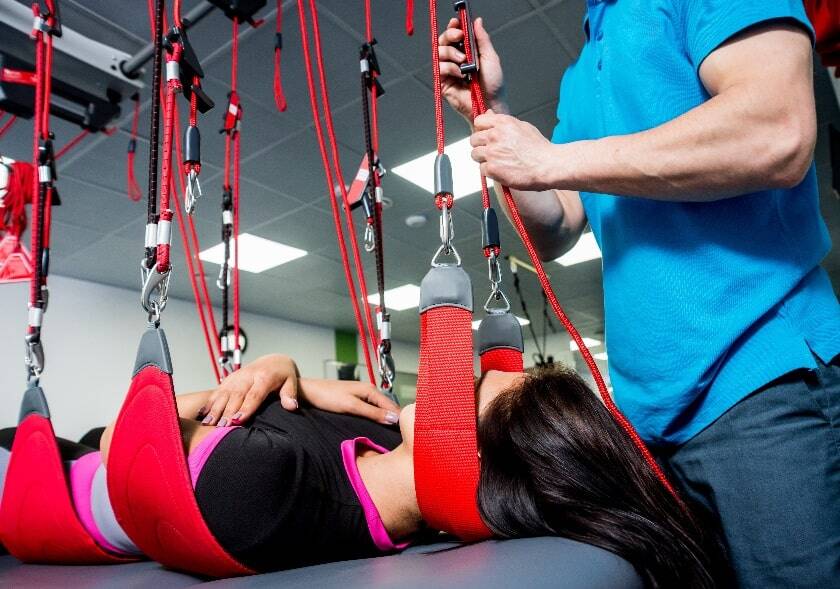
Over 250,000 people are living with a spinal cord injury in the United States today. Every year, the American Association of Neurological Surgeons estimates that over 17,000 people will experience a spinal injury.
What is a Cervical Spine Injury?
Of those, cervical spine injuries are usually the most serious. The cervical spine is made up of the top seven vertebrae at the top of the spinal column. Injuries to these vertebrae and the spinal cord that runs between them can result in devastating and incapacitating injuries.
Causes
Spinal cord injuries are usually the result of trauma to the spinal column. Motor vehicle accidents are the most common cause of spinal trauma for younger people in the US, whereas older people are more likely to damage their spines in a fall. Other frequent causes of spinal injury include sporting accidents – in particular, high impact sports like football and ice hockey, or more risky activities like horse riding – as well as violence and gunshot wounds. It is also possible for the spine to be damaged by arthritis, cancer, inflammation, infections, or degeneration of the spinal disks.
Symptoms
The symptoms of a spinal cord injury will depend on the level of damage to the nerves of the spinal cord, and the site of the injury. For many patients, spinal cord injuries result in paralysis or loss of muscle control below the site of the injury. In the case of a cervical spine injury, the result can be complete paralysis, otherwise known as quadriplegia, in which the arms, hands, trunk, legs and pelvic organs are all affected by the injury. According to the Mayo Clinic, spinal cord injuries may cause symptoms including:
- Difficulty breathing
- Loss of movement and sensation in part of or all the body
- Bladder and bowel incontinence
- Pain in the affected area of the spinal column
Cervical spinal injuries are considered to be a medical emergency. In fact, anyone experiencing significant trauma to the head or neck is advised to seek immediate medical evaluation. It is vital that the person is kept completely still while emergency medical assistance is being sought to avoid making the injury worse.
Levels of Injury
Cervical spinal injuries vary depending on which vertebrae are affected. Injuries to the C1 and C2 vertebra, the top two bones in the spinal column which allow the head to turn, are most often fatal. Damage to the other vertebrae in the neck are still considered extremely severe, as they may cause complete or incomplete paralysis of the body from the point of injury downwards.
What are the Treatment Options for Cervical Spine Injuries?
Treatment for cervical spine injuries will depend on the severity and location of the injury. As a first step, emergency medical service personnel will immobilize the patient to prevent any further damage to the spinal cord. Once the patient has been admitted to the hospital, they will be stabilized; traction may be used to return the spine to correct alignment. In some cases, the patient will be diagnosed with a spinal concussion, rather than a spine injury. Spinal concussions may cause spinal cord dysfunction, partial or complete paralysis, and other neurological symptoms – but the injury will resolve itself within a few days. In the case of spinal injury, the prognosis will depend on the severity of the trauma.
Spinal Surgery
In many cases of spinal injury, surgery will be required to remove bone fragments or foreign objects that are compressing the spinal cord. Surgery may also be recommended to prevent the injury from causing pain in the future.
Rehabilitation
Cervical spinal injuries are severely debilitating. In most cases, spinal injury patients are advised to begin extensive rehabilitation to learn how to manage their new physical condition. Orthopedic rehab is likely to start while the patient is still in the hospital. After the patient’s condition has stabilized, they are frequently referred to an inpatient rehab program in a specialized rehab facility.
How Can Orthopedic Rehab Help with Cervical Spine Injuries?
Orthopedic rehab is a treatment designed to help patients recover from injuries affecting the muscles, bones, joints, including injuries to the spinal column and spinal cord. An orthopedic rehabilitation program will combine multiple therapies in an integrated, customized treatment plan. Patients with injuries to the cervical spine may require extensive physical therapy, as well as occupational therapy to help adjust to their new physical condition.
The benefits of orthopedic rehab for cervical spine injuries include:
Reduced muscular complications
Muscular issues, such as spasms and atrophy, are common after cervical spine injuries. Physical rehabilitation exercises can help reduce the risk of muscular disorders.
Improved circulation
By encouraging movement, orthopedic rehab can help prevent patients with cervical spine injuries from developing circulation issues, such as blood clots or cardiovascular disease.
Improved quality of life
Cervical spine injuries can be severe and may have a major impact on the patient’s ability to function or resume their pre-injury activities. Occupational therapists can help patients find new ways to perform daily tasks or give advice on modifications to the home.
Lowered risk of depression
For many patients, cervical spine injuries can be emotionally overwhelming. Orthopedic rehab programs usually include counseling to help the patient deal with the psychological aspects of their injury and reduce their risk of developing depression.
What Happens During Orthopedic Rehab?
The rehab team will start by evaluating the patient’s physical state in order to design a treatment protocol that has been personalized to their specific condition and needs. Every orthopedic rehab program is different because every cervical spine injury is different. However, most programs will involve:
Exercises
Depending on the patient’s current condition, these may involve strengthening functioning muscles, improving balance and mobility, or working to recover muscular function.
Manual therapies
Manual therapies include massage, traction, and passive mobilization to increase motor function or prevent pressure sores and circulation issues.
Technological treatments and assistive devices
For some cervical spine patients, electrical stimulation of the damaged spinal nerves is recommended to increase nerve function. The rehab team may also train the patient in the use of a wheelchair or other assistive devices.
If you’d like to know more about how the team at Rehab Select help patients with cervical spine injuries, please visit our website or click here to contact us.





